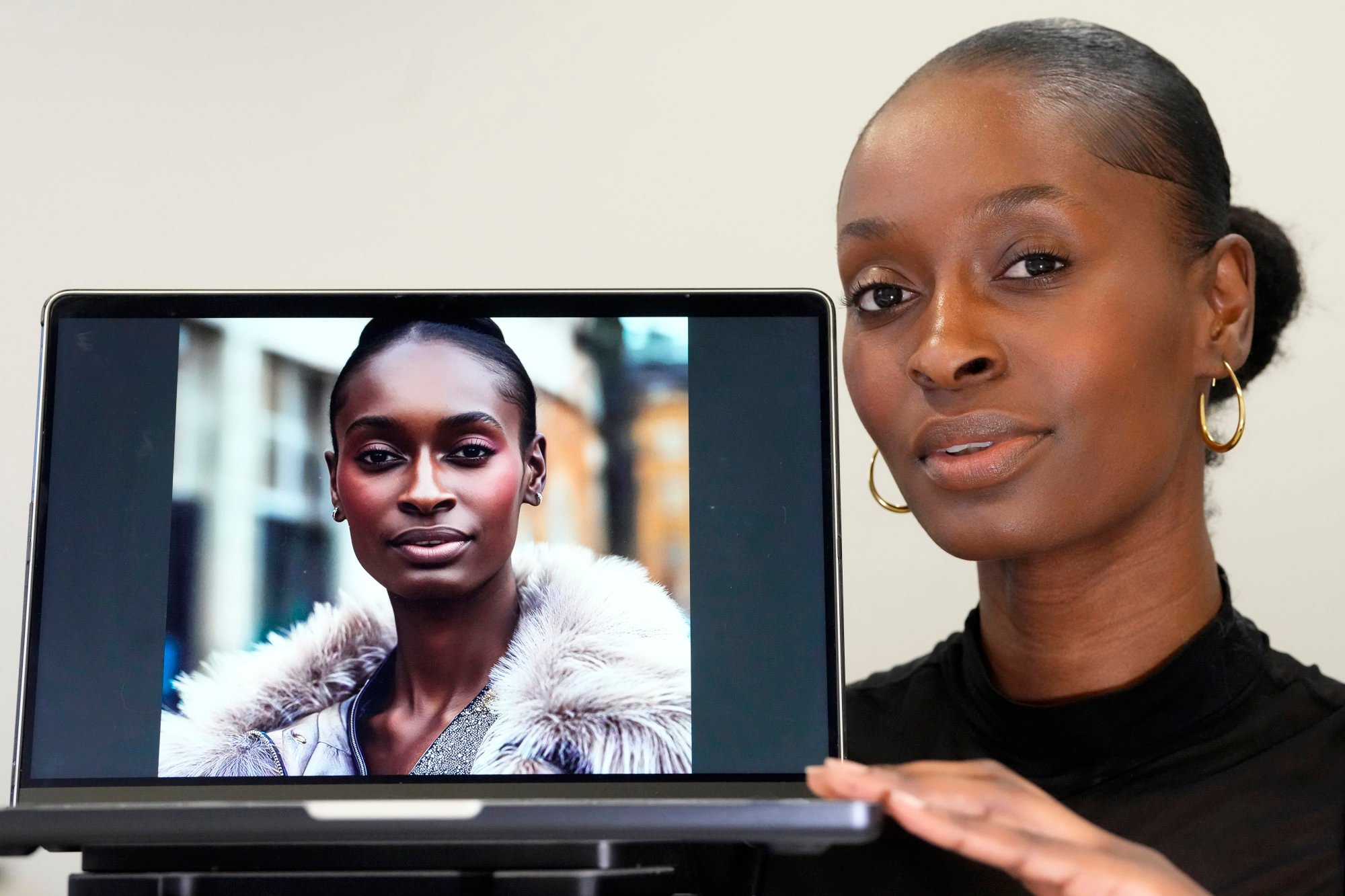
“Fashion is exclusive, with limited opportunities for people of colour to break in,” said Sara Ziff, a former model and founder of the Model Alliance, a non-profit organisation aiming to advance workers’ rights in the fashion industry.
“I think the use of AI to distort racial representation and marginalise actual models of colour reveals this troubling gap between the industry’s declared intentions and their real actions.”
Dead Chinese star’s father slams AI ‘resurrection’ videos, demands respect
Dead Chinese star’s father slams AI ‘resurrection’ videos, demands respect
“We do not see this [AI] pilot as a means to advance diversity or as a substitute for the real action that must be taken to deliver on our diversity, equity and inclusion goals and it should not have been portrayed as such,” Levi said in its statement at the time.

The company said in March that it had no plans to scale the AI programme.
Spokespeople for Nieman Marcus, H&M, Walmart and Macy’s said their respective companies do not use AI models, although Walmart clarified that “suppliers may have a different approach to photography they provide for their products but we don’t have that information”.
It’s something that even when we are no longer here, the future generations can look back at and be like, ‘These are the pioneers’
Nonetheless, companies that generate AI models are finding a demand for the technology, including Lalaland.ai, which was co-founded by Michael Musandu after he was feeling frustrated by the absence of clothing models who looked like him.
“One model does not represent everyone that’s actually shopping and buying a product,” he said. “As a person of colour, I felt this painfully myself.”
Musandu says his product is meant to supplement traditional photo shoots, not replace them. Instead of seeing one model, shoppers could see nine to 12 models using different size filters, which would enrich their shopping experience and help reduce product returns and fashion waste.

The technology is actually creating new jobs, since Lalaland.ai pays humans to train its algorithms, Musandu said.
And if brands “are serious about inclusion efforts, they will continue to hire these models of colour”, he added.
London-based model Alexsandrah says her digital counterpart has helped her distinguish herself in the fashion industry. In fact, the real-life Alexsandrah has even stood in for a black computer-generated model named Shudu, created by Cameron Wilson, a former fashion photographer turned CEO of The Diigitals, a UK-based digital modelling agency.
Wilson designed Shudu in 2017, described on Instagram as the “The World’s First Digital Supermodel”. But critics at the time accused Wilson of cultural appropriation and digital blackface.
Wilson took the experience as a lesson and transformed The Diigitals to make sure Shudu – who has been booked by Louis Vuitton and BMW – did not take away opportunities but instead opened possibilities for women of colour. Alexsandrah, for instance, has modelled in-person as Shudu for Vogue Australia, and writer Ama Badu came up with Shudu’s backstory and portrays her voice for interviews.
Alexsandrah said she is “extremely proud” of her work with The Diigitals, which created her own AI twin.
“It’s something that even when we are no longer here, the future generations can look back at and be like, ‘These are the pioneers.’”
But for Yve Edmond, a model based in the New York City area who works with major retailers to check the fit of clothing before it is sold to consumers, the rise of AI in fashion modelling feels more insidious.
Edmond worries modelling agencies and companies are taking advantage of models, who are generally independent contractors afforded few labour protections in the US, by using their photos to train AI systems without their consent or compensation.
She described one incident in which a client asked to photograph Edmond moving her arms, squatting and walking for “research” purposes. Edmond refused and later felt swindled – her modelling agency had told her she was being booked for a fitting, not to build an avatar.
“This is a complete violation,” she said. “It was really disappointing for me.”

But with AI regulations absent, it is up to companies to be transparent and ethical about deploying AI technology. And Ziff, the founder of the Model Alliance, likens the current lack of legal protections for fashion workers to “the Wild West”.
That is why the Model Alliance is pushing for legislation like the one being considered in New York state, in which a provision of the Fashion Workers Act would require management companies and brands to obtain models’ clear written consent to create or use a model’s digital replica; specify the amount and duration of compensation; and prohibit altering or manipulating models’ digital replica without consent.
Alexsandrah says that with ethical use and the right legal regulations, AI might open up doors for more models of colour like herself. She has let her clients know that she has an AI replica, and she funnels any inquiries for its use through Wilson, who she describes as “somebody that I know, love, trust and is my friend”.
Wilson says any compensation for Alexsandrah’s AI is comparable to what she would make in-person.
Edmond, however, is more of a purist.
“We have this amazing Earth that we’re living on. And you have a person of every shade, every height, every size. Why not find that person and compensate that person?”
